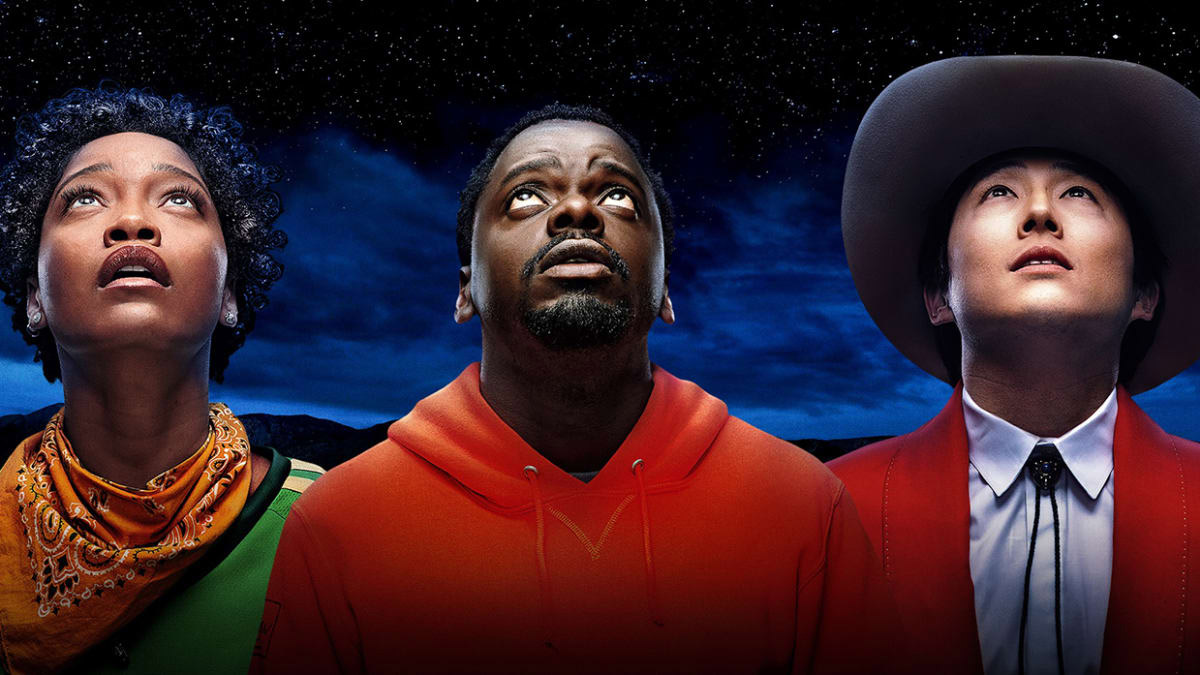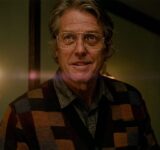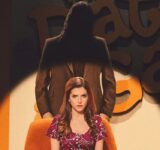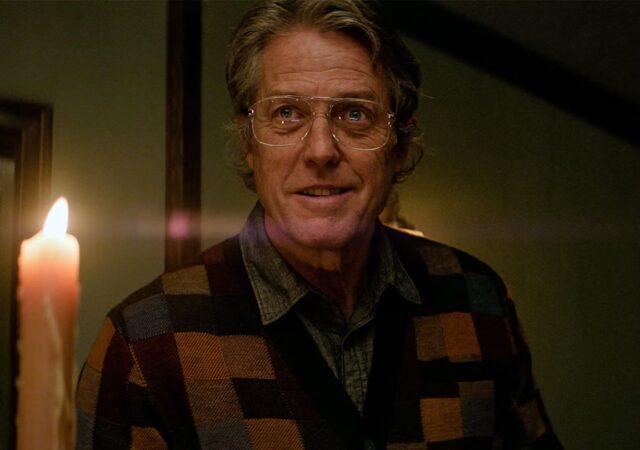Jordan Peele could have taken an easy route after the success of Get Out, staying in his comfort zone and repeating himself with his themes and directing style. And while you could say he did that to an extent with Us, Nope feels like Peele’s boldest movie yet. It’s not a perfect horror movie, but it’s a unique take on an age-old trope that’s also a showcase of building tension and the old adage ‘less is more’.
OJ Haywood (Daniel Kaluuya), a quiet horse trainer, tries to save his family business of training horses for movies. This business has fallen on hard times since his father is killed in a gruesome accident. With the help of his charming and estranged brother, Emerald (Keke Palmer), OJ tries to keep the company afloat after his father’s death. When the Haywoods see a strange cloud on the horizon of their ranch, they enlist the help of a tech-store employee named Angel (Brandon Perea) and a notoriously grumpy, highly-regarded cinematographer Antlers Holst (Michael Wincott) to investigate the phenomenon. They hope to get the ‘Oprah’ level money shot that will pull them out of their financial rut.
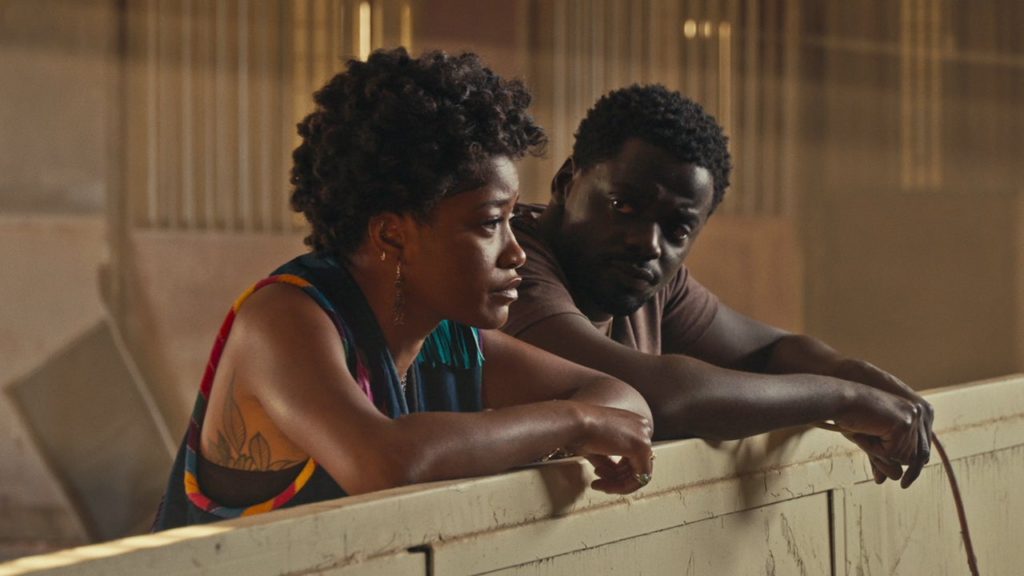
Peele’s films have always had a strong theme of racial relations. In Nope, the Haywoods are the direct descendants of the unnamed and forgotten Black jockey in Eadweard Muybridge’s The Horse in Motion, which is the first series of moving images. “Since the moment pictures could move, we got skin in the game,” Em says. We see that people of color have no choice but to constantly sell themselves, as seen with Jupe (Steven Yeun). This is a core part of these characters, and Kaluuya and Palmer portray that deftly in their performances.
Kaluuya, in a stark change from his performances in Get Out and Judas and the Black Messiah, turns in an engaging performance with a character explicitly written to be soft-spoken and uncharismatic.
Kaluuya has a way of holding himself that makes his characters seem like they’re radiating with an internal intensity.
Even when he’s playing a character who is supposed to come off as shy or meek, there’s something about the way he looks directly into the camera (and into the hearts and minds of his audience) that screams otherwise. You won’t find a better example of a character’s eyes being a character’s most expressive trait than in Kaluuya’s performance.
Palmer is a more than capable foil for Kaaluya as the multi-talented, smartmouth Emerald. She has great chemistry with Kaaluya and their characters are believable as on-screen siblings movies. Brandon Perea does well as the geeky, conspiracy theorist Angel while Michael Wincott gives a gruff, taciturn performance as the cinematographer version of Ahab from Moby Dick (although he doesn’t necessarily have an ax to grind with the focus of this movie).
Unfortunately, Nope has some issues with pacing, characterization, and plotting.
The first act — while necessary to establish the themes — goes on a little bit long before the actual story starts. This is an odd pacing choice, because Peele could have easily cut the first act down by a few scenes to make it a little more concise, but instead, the first act goes on for about 40 minutes. Because of this, the movie feels a little slow for the first act, but once the subject of the movie is revealed, the movie picks up dramatically and the tension is palpable. Some of the characterizations feel a bit thin. The plot, too, is a little thin, but it is definitely serviceable for the kind of movie this is. The story is a series of spectacles rather than one tightly-plotted story, but since the film itself tries to be a spectacle, that isn’t much of a problem.
Peele does best when tension fills the screen, as he has internalized for a while that the fear of something bad happening is more important than the surprise reveal itself. The entity that the Haywoods are trying to film is mostly hidden in the clouds, except for some visceral scenes where we get to see its inner workings and then the climax where it unfurls from a familiar shape into a distinctly unique form.
Overall, Nope is a unique horror movie with subtle themes that leave the center stage for tension and spectacular scenes.
Hopefully, Peele continues to take daring choices and carve out his legacy as a post-modernist auteur of the horror genre.

